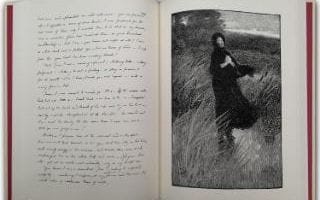This post is also available in:
 English (الإنجليزية)
English (الإنجليزية)
| Name of Publishing House | mills and boon press |
|---|---|
| website | https://www.millsandboon.co.uk/ |
| Communication | https://www.millsandboon.co.uk/np/contactus |
Since two dashing young entrepreneurs – Gerald Mills and Charles Boon – launched the company in 1908 with just a modest £1,000, millions of women across the globe have been entranced by their books, reaching into their handbags or to their bookshelves to spend a few hours transported into a fantasy world of intrigue, danger, passion and romance.
Such is the strength of the brand that in 1982, a Mills & Boon book was added to a time capsule in the grounds of Castle Howard, Yorkshire, to mark the 60th anniversary of the BBC. The capsule contained ‘vital clues of life in 1982 of generations to come’. Also, in 1997 the Oxford English Dictionary added ‘Mills & Boon’ to its esteemed canon – meaning, ‘romantic story book’.
Mills & Boon’s army of dedicated readers know that once they pick a brightly coloured paperback, they will be taken on an easy, thrilling read – with a guaranteed happy ending. Alan Boon, one of the masterminds behind the stylised romances, once declared that the books “could take the place of Valium” – because they are so well known for their restorative quality.
So how did the company grow to into such an epic success story?
The early days
Mills & Boon wasn’t all about lust and amour at first – when the company initially launched, it was a general fiction publisher, turning out books about everything from travel to craft. The first book it ever published was prophetically a romance book – Arrows From The Dark, by Sophie Cole. Critics gave it a glowing report and by 1914, 1,394 women had bought a copy. The writer went on to pen another 65 thrilling titles for the publisher during her fruitful career.
At first, the company was very much an intimate family business: Charles recruited his brother Frank and sister Margaret to work for him and later in the 1930s he drafted his three sons – Charles, Alan and John – into the blossoming company.
During 1909, the firm’s first year, 123 contracts were signed. Mills & Boon spared no expense with signing up the big names such as Robert Lynd, Cosmo Hamilton, Max Pemberton and Eustace Mills, through the authors’ esteemed agents. In the first few years of business, they also published novels by Hugh Walpole, P.G. Wodehouse and I.A.R. Wylie.
Whilst they retained a handful of established names on the books, Charles Boon in particular, was passionate about finding new writing talent. The ‘June 15’ series was a particular hit. This new title, published each year on that date, heralded the discovery of a major new name. The first June 15 novel was The Veil: A Romance Of Tunisia by E.S. Stevens – which sold a whopping 7,000 copies.
It was during its first decade that the company started to develop a personal touch with its readership and market their books in a new way: When Stevens’s follow-up title, The Mountain Of God, was published in 1911, Mills & Boon offered a ‘souvenir chapter’ free to any address. That title went on to sell 10,000 copies.
Building on the June 15 series, Mills & Boon started to bill themselves as the ‘Promised Land’ for new authors and budding writers across the land started putting pen to paper. In 1912, for example, 1,000 new manuscripts landed on the doormat of the Mills & Boon office, 75 per cent from women and 95 per cent from unknown authors.
“Of that number, no more then six were actually published by us,” Charles Boon said in a 1913 interview with the Daily Citizen. It seems that fledgling authors weren’t put off by the statistics, however, and manuscripts continued to flood into the Mills & Boon office.
Charles Boon also saw that the future of the company was dependent on catering to the wishes of the fairer sex. “I am certain that today the bulk of novels published are devoured by women before they reach the men,” he said.
By the onset of the First World War, sales to both libraries and the general public were good – and the company’s reputation was growing.
Escapism through romance
Like many publishers, Mills & Boon faced financial hardship during the 1920s – and nearly went bankrupt on a number of occasions. The sweet smell of success wasn’t far off though – it was shortly after this time that the company laid down the foundations for their future economic prosperity, when they discovered a growing appetite for escapism through romance, so decided to concentrate on hardback romances.
As during the Second World War, women longed to ‘escape’ with their nose in a book. There were also restrictions on their leisure activities, and many women enjoyed curling up with a novel to distract themselves.
These titles were initially sold through weekly, two-penny libraries. There, they became known as ‘the brown books’, because of their distinctive binding.
Mills & Boon published flashy and bold ads: in one full-page advertisement in the February 1927 National Newsagent they boldly declared: ‘Selling in tens of thousands! But you know how they sell! Large Size, Picture Wrappers.’
Dust jackets, often reproduced as poster ad campaigns, were increasingly becoming a selling point with eye-catching images – Joan Sutherland’s The Dawn, for example, featured a handsome Arab sheikh carrying a young heroine on a galloping horse.
After the death of Gerald Mills in 1928, Charles Boon was determined to keep and build upon the firm’s loyal readership of middle and upper-class women who loved to immerse themselves in a good romance and by 1929 the firm’s best-selling authors, such as Denise Robins, Elizabeth Carfrae, Sophie Cole and Louise Gerard, were all writing romance fiction.
The Golden Age
The 1930s was considered the golden age for the company as they continued to set new sales records. Given the Great Depression, people still preferred to borrow their titles and went to their local library where the assistant would hand over another book.
On average, in the 1930s, between 6,000 and 8,000 copies of each story were printed.
They also discarded the traditional publishing route of publicising a book and its author individually. “They were still promoting hardbacks in the way they promoted John Walpole in 1915, like the precious life of a master,” John Boon once declared. “We started doing the list in a block. We published fortnightly. We produced catalogues to tie in with that. Ladies could pester libraries.”
Packaging and production became standardised in an effort to promote the imprint. The brightly coloured covers started to become a trademark for the brand and were leaping off shelves across the country. In the mid-1930s Mills & Boon advertised its Half-Crown Library with reproductions of covers as “jackets that pull”.
The hunt for new writers continued and they were found in all classes and ages – and even included Irene Sawtridge, a mysterious recluse who ran a sheep farm in Devon and went by the name Jan Tempest.
During and after the war years
By the outbreak of the Second World War in 1939, Mills & Boon’s name as a ‘library house’ – supplying wholesome romantic fiction to circulating libraries – was set in stone.
However, the war had a definite impact on the publisher. Paper rationing limited edition sizes, books sold out quickly, returns disappeared, as did the backlist.
However, it also encouraged the readership – and the books went out of print as soon as they were published. Women became even more eager to escape the realities of the time.
Author Mary Burchell recalled: “Of course, we all like make-believe, particularly when things aren’t going particularly well, naturally”.
Sadly, in 1943, Charles Boon also passed away – leaving a gaping hole at Mills & Boon – which was only filled once his sons returned from the war.
Whilst the war ended in 1945 – the conditions lingered on and paper rationing, for example, was not lifted until 1949.
During the years following the war, Mills & Boon were everywhere – ads were created, articles on the firm were published and authors made personal appearances. Every book, furthermore, contained an ad of its own for the reader.
On the back of a dust jacket, a middle-class woman declared: “I always look for a Mills & Boon when I want a pleasant book. Your troubles are at an end when you choose a Mills & Boon novel. No more doubts! No more disappointments! A Mills & Boon book will give you hours of happy reading.”
The once-resilient libraries slipped into decline when inexpensive magazines and paperbacks became increasingly popular. Television started to become more common and some women would pass up their weekly trip to the library for an hour behind the black and white set.
Whilst still targeting librarians and book buyers, Mills & Boon also started to establish a direct mail catalogue operation. Twice a year, the ‘Happy Reading’ catalogue did the rounds of its regular readers.
Alan Boon linked the company up with magazines such as Women’s Weekly and other popular publications. Editors of these magazines helped to shape the editorial direction of the company’s output. The magazine industry was thriving and thus served as an excellent vehicle for Mills & Boon – whose serials appeared weekly. Readers would have a taste of a story and go and buy or borrow the book.
An important name at the time was Winifred ‘Biddy’ Johnson, who edited Woman’s Weekly for over 20 years. Alan Boon described the publisher and Woman’s Weekly as being “sort of brother and sister” during the period – and Biddy often demanded changes and dictated policy to the authors during her reign.
During this time, one of the company’s biggest stars was also discovered. Lilian Warren, who wrote under three names – Rosalind Brett, Kathryn Blair and Celine Conway – established a new style, capturing the imagination of her readers with erotic, sometimes violent stories, set on foreign shores.
“She had an immense influence on the romance novel, by the way she portrayed these handsome heroes, the sunshine backgrounds, and her skills in dialogue,” Alan Boon noted.
The company started to eschew literary agents for a more personal approach with authors. Alan Boon once turned down a manuscript from a literary agent, saying it didn’t meet the publisher’s strict specifications. “We would, indeed, have to turn down Shakespeare if he sent one along,” he explained.
Hundreds of writers, some penning as many as 12 books a year, flourished under the wing of Mills & Boon. At the time, it was one of the rare opportunities women got to earn a considerable amount of money.
Expansion abroad
Mills & Boon started to promote its titles across Europe – and its novels were a hit in places such a Germany where the women couldn’t get enough of the titles’ handsome English heroes.
One of the most notable developments occurred in the 1950s when Mills & Boon caught the attention of the Canadian firm, Harlequin Books. Set up in 1949 by Richard and Mary Bonnycastle, the company had begun to publish reprints of Western novels, mysteries and thrillers. In 1957, they published their first Mills & Boon – Anne Vinton’s medical romance, The Hospital In Buwambo. In 1958, Harlequin published 16 Mills & Boon titles, all Doctor-Nurse romances. The companies then started to publish each other’s books in their respective countries – and Harlequin’s purchases of Mills & Boon titles, along with profits. In 1959 of 54 books Harlequin published, 34 were Mills & Boon titles – which leapt off the shelves in Canada.
“I didn’t realise how well I was selling abroad,” author Betty Beaty recalled. “Until I got a cheque for over £9,000 for a single North American edition.
“This was a large amount at the time, and I rang Mills & Boon saying I thought they’d made a mistake.”
The increase in revenues allowed Mills & Boon to expand into the paperback market in the 1960s.
The paperback revolution
By 1966, paperbacks represented 50 per cent of Mills & Boon’s turnover and by 1968 they were turning out 130 hardback and 72 paperback romances a year.
Paperback publishing also encouraged standardisation – and book length was enforced at 188 to 192 pages and glamorous heroines became the central element of covers.
Whilst the interdependence between Harlequin and Mills & Boon grew, the relationship became more complex and slowly Harlequin began to accept less traditional titles, not necessarily based on doctors and nurses. The books started to represent the changing times and progressive attitude, particularly towards sex.
More new authors signed up – one of the most popular of which, was Violet Winspear. Influenced by the likes of Lilian Warren, she set her novels in Hollywood with a brooding hero and young tortured heroine. She became Mills & Boon’s top-selling writer – and shocked the older readers with her erotic tales. In 20 years, she wrote 37 titles, most of which were set abroad.
As society was changing, along with attitudes to family, love, sex and marriage, Mills & Boon’s authors started to reflect these developments in their writing. The traditional boundaries still remained firm – but the occasional thriller fantasy became more commonplace. The traditionally submissive heroine became more assertive undertaking solo journeys, following their heroes to foreign countries, for example.
Merger with Harlequin
In 1971, the companies merged. A few years later, a controlling interest was sold to the Torstar Corporation, a Canadian communications company.
The development led the company on the road to unprecedented expansion and profit. With the injection of funds, during the 1970s, the publisher started to advance across the globe – their overseas acquisitions and partnerships took the company’s brand of love stories to bookshelves in The Netherlands, Germany, France, Sweden, Italy, Greece and as far a field as Japan.
The company also marketed books in a different way and now readers could have the books delivered directly to their doorstep, along with special gifts and reader questionnaires.
Such was their worldwide domination, by the mid 1980s Harlequin Mills & Boon were selling in the region of 250 million books worldwide.
The initiatives speak for themselves – in 1989 to mark Harlequin’s 40th anniversary, every one of the company’s 100 foreign markets published the same title on the same date, A Reason For Being by Penny Jordan – their most popular writer. When the Berlin Wall came down in 1990, staff from their West German office handed out 750,000 free copies to women from East Germany. Sheila Holland (Charlotte Lamb) said: “Mills & Boon put my books all over Europe but Harlequin has built an Empire”.
Mills & Boon today
In the 2000s, they maintain the title of the world’s leading publisher of romance fiction.
In August 2014 HarperCollins’ parent company News Corp completed its acquisition of Harlequin Enterprises from Torstar Corporation.
Each month, Mills & Boon publish 120 new titles, with manuscripts from 200 authors living in the UK and a further 1,300 worldwide. Every five seconds there is a new Mills & Boon book sold within the UK.
There are currently 16 different Mills & Boon series, with something for everyone. Here are just some of them:
Modern: Step into a world of sophistication and glamour, where sinfully seductive heroes await you in luxurious international locations.
Medical: Enter into the world of high-flying doctors as they navigate the pressures of modern medicine and find escape, passion, comfort and love – in each other’s arms!
Historical: Indulge your fantasies of delicious Regency Rakes, fierce Viking warriors and rugged Highlanders. Be swept away into a world of intense passion, lavish settings and romance that burns brightly through the centuries
Intrigue: Experience the thrill of life on the edge and set your adrenalin pumping! These gripping stories see heroic characters fight for survival and find love in the face of danger.
Blaze: Sassy heroines and irresistible heroes embark on sizzling sexual adventures as they play the game of modern love and lust. Expect fast paced reads with plenty of steamy encounters.
Nocturne: Unleash the untamed passions of the underworld in these deliciously wicked tales of paranormal romance.
Cherish: Dare to dream… these sparkling romances will make you laugh, cry and fall in love – again and again!
Desire: Be swept away by passion… with intense drama and compelling plots, these emotionally powerful reads will keep you captivated from beginning to end.
By Request: Great-value titles featuring classic stories from favourite authors.
Heartwarming: Contemporary romances that celebrate traditional values and love.
Love Inspired: Inspiring and enriching romances about faith, hope and the healing power of love.
Kimani: Vibrant and soulful love stories featuring African-American heroes and heroines in compelling emotional conflicts.
Romantic Suspense: Enjoy romance with a dash of danger! Riveting, page-turning stories with brave, powerful and adventurous characters.
And it doesn’t stop there. Mills & Boon are always developing fresh, exciting series that will appeal to new and current readers alike.
This post is also available in:
 English (الإنجليزية)
English (الإنجليزية)

 العربية
العربية 



